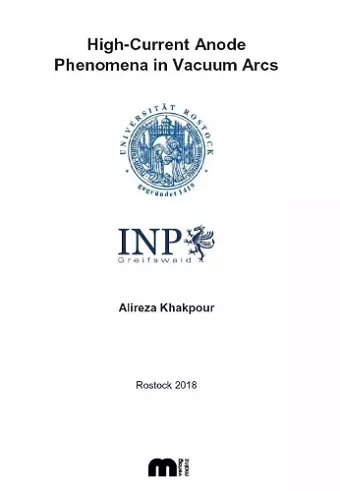High-Current Anode Phenomena in Vacuum Arcs
Format:Paperback
Publisher:Verlag G. Mainz
Published:13th Dec '18
Should be back in stock very soon

The emerging interest on the application of vacuum interrupter (VI) in medium and even high-voltage application has led to increase of comprehensive and fundamental research on VIs. Application of these interrupters is however hindered by limitation of interrupting capability, when high-current anode phenomena occur.
The goal of the work is to investigate the high-current anode phenomena using spectroscopic methods se well as electrical measurements. Different current waveforms, i.e. AC and DC pulses are applied. Moreover, the impact of vacuum interrupter properties, e.g. electrode diameter and geometries, contact materials, opening time and opening speed on the formation of high-current anode phenomena are investigated.
The results reveal that the threshold current of the high-current anode formation is dominated by the current in case of high-frequency pulsed, whereas in case of pulsed DC, it is controlled by transferred charge.
Along with typical and already known high-current modes, i.e. footpoint, anode spot, and intense modes, a new type of high current anode mode, anode spot type 2, is introduced. Anode spot type 2 is similar to the intense mode but it appears at larger gap length. In contrast to anode spot (anode spot type 1), both anode and cathode are active in case of anode spot type 2. The line emission intensities of all species increase near the anode and the cathode in case of anode spot type 2. The anode spot type 2 is examined by determining radiating density, ground state density and electron density which is about two times higher compared to anode spot type 1.
Optical emission spectroscopy combined with high-speed camera imaging (video spectroscopy) is used to investigate the temporal and spatial distribution of Cu I, Cu II, and Cu III during discharge modes.
The results show different patterns during discharge modes. The formation of anode plume, is investigated using video spectroscopy. Existence diagrams confirm that the anode plume appears always after the extinction of anode spot type 2 in case of CuCr electrodes before current zero. The results unfold that the emission from the inner part of anode plume is covered by atomic lines, whereas the outer part is dominated by ionic line radiation. Anode plume formation which is a result of shock effect in front of the anode shows that anode plume contracts...
ISBN: 9783958862548
Dimensions: unknown
Weight: 268g
180 pages